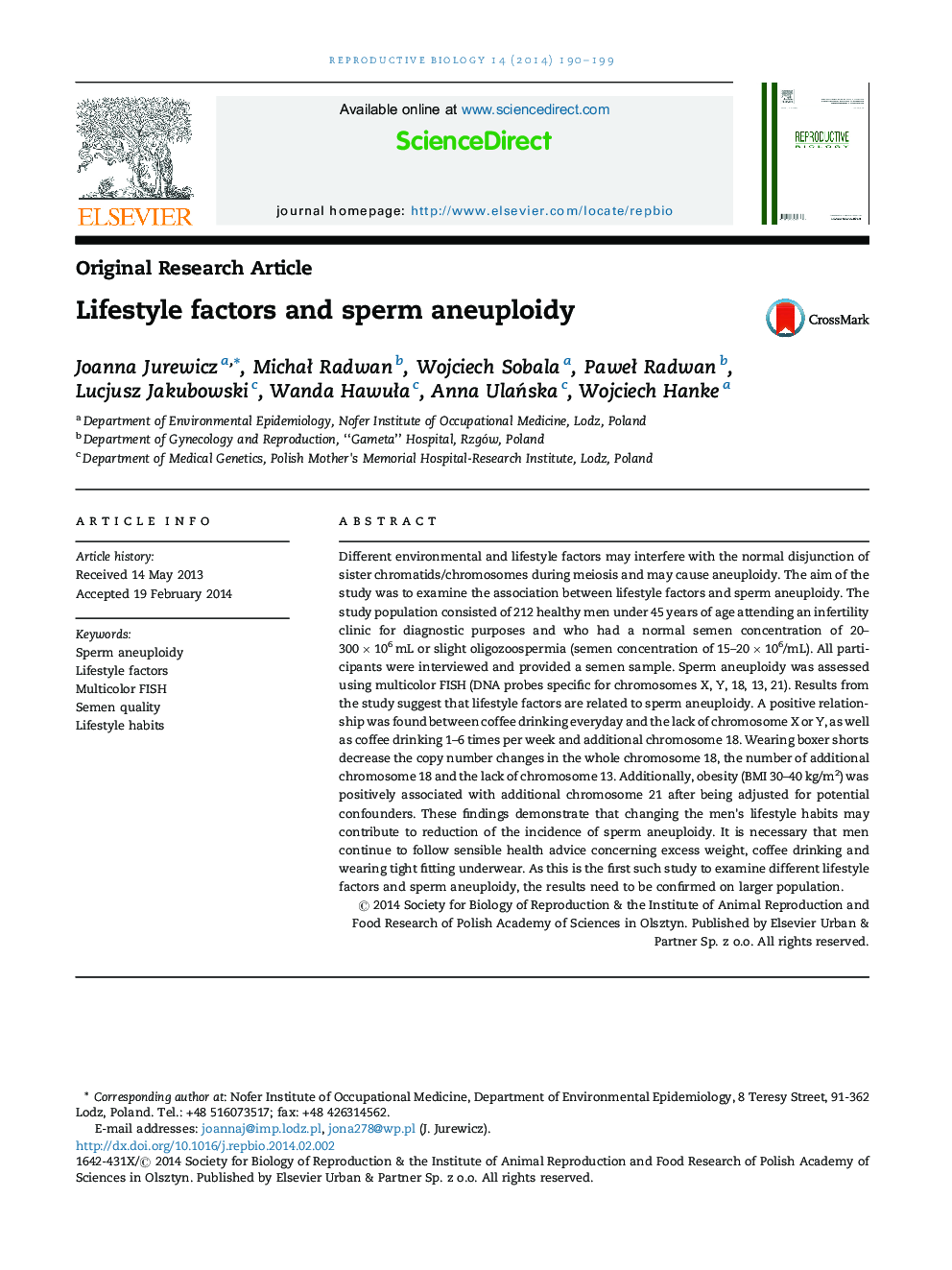| کد مقاله | کد نشریه | سال انتشار | مقاله انگلیسی | نسخه تمام متن |
|---|---|---|---|---|
| 2062424 | 1076606 | 2014 | 10 صفحه PDF | دانلود رایگان |

Different environmental and lifestyle factors may interfere with the normal disjunction of sister chromatids/chromosomes during meiosis and may cause aneuploidy. The aim of the study was to examine the association between lifestyle factors and sperm aneuploidy. The study population consisted of 212 healthy men under 45 years of age attending an infertility clinic for diagnostic purposes and who had a normal semen concentration of 20–300 × 106 mL or slight oligozoospermia (semen concentration of 15–20 × 106/mL). All participants were interviewed and provided a semen sample. Sperm aneuploidy was assessed using multicolor FISH (DNA probes specific for chromosomes X, Y, 18, 13, 21). Results from the study suggest that lifestyle factors are related to sperm aneuploidy. A positive relationship was found between coffee drinking everyday and the lack of chromosome X or Y, as well as coffee drinking 1–6 times per week and additional chromosome 18. Wearing boxer shorts decrease the copy number changes in the whole chromosome 18, the number of additional chromosome 18 and the lack of chromosome 13. Additionally, obesity (BMI 30–40 kg/m2) was positively associated with additional chromosome 21 after being adjusted for potential confounders. These findings demonstrate that changing the men's lifestyle habits may contribute to reduction of the incidence of sperm aneuploidy. It is necessary that men continue to follow sensible health advice concerning excess weight, coffee drinking and wearing tight fitting underwear. As this is the first such study to examine different lifestyle factors and sperm aneuploidy, the results need to be confirmed on larger population.
Journal: Reproductive Biology - Volume 14, Issue 3, September 2014, Pages 190–199